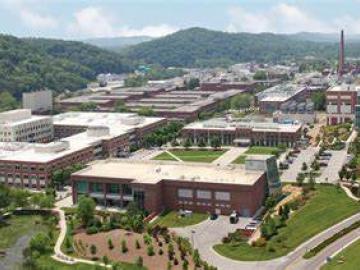Filter News
Area of Research
- Advanced Manufacturing (16)
- Biology and Environment (33)
- Building Technologies (1)
- Clean Energy (129)
- Computational Biology (1)
- Computational Engineering (2)
- Computer Science (9)
- Electricity and Smart Grid (3)
- Energy Sciences (1)
- Functional Materials for Energy (2)
- Fusion and Fission (7)
- Fusion Energy (1)
- Isotopes (1)
- Materials (59)
- Materials for Computing (10)
- Mathematics (1)
- National Security (21)
- Neutron Science (67)
- Nuclear Science and Technology (6)
- Quantum information Science (8)
- Sensors and Controls (1)
- Supercomputing (46)
News Type
News Topics
- (-) 3-D Printing/Advanced Manufacturing (80)
- (-) Big Data (38)
- (-) Clean Water (26)
- (-) Energy Storage (73)
- (-) Grid (42)
- (-) Machine Learning (30)
- (-) Neutron Science (81)
- (-) Quantum Science (37)
- Advanced Reactors (24)
- Artificial Intelligence (59)
- Bioenergy (66)
- Biology (76)
- Biomedical (41)
- Biotechnology (12)
- Buildings (38)
- Chemical Sciences (37)
- Climate Change (69)
- Composites (18)
- Computer Science (130)
- Coronavirus (32)
- Critical Materials (13)
- Cybersecurity (23)
- Decarbonization (47)
- Emergency (1)
- Environment (153)
- Exascale Computing (24)
- Fossil Energy (3)
- Frontier (23)
- Fusion (44)
- High-Performance Computing (60)
- Hydropower (11)
- Irradiation (3)
- Isotopes (34)
- ITER (6)
- Materials (102)
- Materials Science (87)
- Mathematics (6)
- Mercury (10)
- Microelectronics (2)
- Microscopy (38)
- Molten Salt (7)
- Nanotechnology (40)
- National Security (40)
- Net Zero (7)
- Nuclear Energy (79)
- Partnerships (16)
- Physics (35)
- Polymers (20)
- Quantum Computing (19)
- Renewable Energy (1)
- Security (14)
- Simulation (32)
- Software (1)
- Space Exploration (22)
- Statistics (1)
- Summit (37)
- Sustainable Energy (84)
- Transformational Challenge Reactor (4)
- Transportation (66)
Media Contacts

Rishi Pillai and his research team from ORNL will receive a Best Paper award from the American Society of Mechanical Engineers International Gas Turbine Institute in June at the Turbo Expo 2024 in London.

The Society of Manufacturing Engineers has honored three Oak Ridge National Laboratory researchers with the 2024 SME Susan Smyth Outstanding Young Manufacturing Engineer Award.

ORNL’s Erin Webb is co-leading a new Circular Bioeconomy Systems Convergent Research Initiative focused on advancing production and use of renewable carbon from Tennessee to meet societal needs.

An international team using neutrons set the first benchmark (one nanosecond) for a polymer-electrolyte and lithium-salt mixture. Findings could produce safer, more powerful lithium batteries.

Shift Thermal, a member of Innovation Crossroads’ first cohort of fellows, is commercializing advanced ice thermal energy storage for HVAC, shifting the cooling process to be more sustainable, cost-effective and resilient. Shift Thermal wants to enable a lower-cost, more-efficient thermal energy storage method to provide long-duration resilient cooling when the electric grid is down.
The Neutron Scattering Society of America, or NSSA, recognized Oak Ridge National Laboratory’s Ke An and Ken Herwig as fellows for their outstanding contributions to neutron scattering.

ORNL scientists have spent the past 20 years studying quantum photonic entanglement. Their partnership with colleagues at Los Alamos National Laboratory and private industry partner Qubitekk led to development of the nation’s first industry-led commercial quantum network. This type of network could ultimately help secure the nation’s power grid and other infrastructure from cyberattacks.

Scientists at ORNL have developed 3D-printed collimator techniques that can be used to custom design collimators that better filter out noise during different types of neutron scattering experiments
ORNL scientists have determined how to avoid costly and potentially irreparable damage to large metallic parts fabricated through additive manufacturing, also known as 3D printing, that is caused by residual stress in the material.

Astrophysicists at the State University of New York, Stony Brook and University of California, Berkeley, used the Oak Ridge Leadership Computing Facility’s Summit supercomputer to compare models of X-ray bursts in 2D and 3D.




